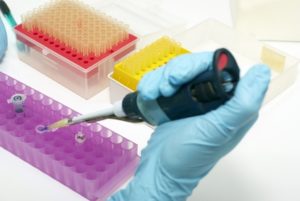 Last week, Ryan Braun made history, becoming the first major league athlete to successfully appeal charges of steroid use and avoiding a 50-game suspension penalty. This is entirely unheard-of in the sports world. Allegations of performance enhancing through drugs and steroids are fairly common, especially in a career where physical capabilities are so important. Bud Selig, the commissioner for Major League Baseball, stated that the sport “has a comprehensive testing system second to none and that it has fully addressed a drug problem that has plagued it for more than a decade.”(1) Usually, athletes are held to a strict liability standard, meaning that they are responsible for what enters their body, regardless of whether or not it was consciously ingested. Drug tests are usually done at random during the playing season, and the results tested for the presence of these substances.
Last week, Ryan Braun made history, becoming the first major league athlete to successfully appeal charges of steroid use and avoiding a 50-game suspension penalty. This is entirely unheard-of in the sports world. Allegations of performance enhancing through drugs and steroids are fairly common, especially in a career where physical capabilities are so important. Bud Selig, the commissioner for Major League Baseball, stated that the sport “has a comprehensive testing system second to none and that it has fully addressed a drug problem that has plagued it for more than a decade.”(1) Usually, athletes are held to a strict liability standard, meaning that they are responsible for what enters their body, regardless of whether or not it was consciously ingested. Drug tests are usually done at random during the playing season, and the results tested for the presence of these substances.
Ryan Braun’s urine sample was collected, along with other players’ samples, for testing on October 1, 2011 by a licensed MLB tester, Dino Laurenzi Jr. Says Laurenzi, “Given the lateness of the hour that I completed my collections, there was no FedEx office… that would ship packages that day or Sunday.”(2) The samples were stored in Laurenzi’s basement refrigerator until they were shipped two days later on Monday. When the sample was analyzed later, it tested positive. The presence of synthetic testosterone was detected, typically indicating that a subject had taken some sort of illegal substance. This resulted in a proposed 50-game suspension penalty for the infraction. However, an arbitrator overturned the case on February 24th, 2012. As ESPN legal analyst Lester Munsen
describes, “MLB has the burden of proof. MLB must persuade the arbitrator that its specimen collector and its laboratory followed the required procedure step-by-step, with no exceptions.”(3) Since the sample was stored in Laurenzi’s basement and not shipped immediately, the procedure’s integrity was compromised.
What kind of issues does this raise for the field of major-league sports? What about the field of forensic testing? The issue of chain of custody is very serious part of testing accuracy and reliability. It essentially requires that a sample in evidence must be transferred and stored in compliance with strict guidelines. According to Arizona case law4, the side in a case that introduces forensic evidence is required to prove that it is valid and that appropriate chain of custody procedures were followed. Since the MLB introduced the case, they were required to show adherence to proper chain of custody procedures. The decision to store rather than ship the samples right away broke this chain of custody, and the consequences of this rests with the MLB.
This holds true for DUI cases and testing: the State has the burden of proof. The State is responsible for proving criminal charges beyond a reasonable doubt. This means that blood evidence testing needs to follow the proper chain of custody procedures accepted by the forensic science community. In the field of forensics, trusting that the sample was fine in any basement doesn’t meet these relevant criteria. It wouldn’t be acceptable to “skip” a step in an experiment and still expect valid results. The same holds true for the chain of custody procedure and all other aspects of producing reliable evidence. Solid proof that procedures were followed eliminates doubt that the results are unreliable.
When an individual’s career and livelihood are on the line, forensic testing procedures in the matter need to be held to a high standard. These allegations of drug use put Ryan Braun’s reputation and career on the line before both sides of the story had been heard. In a DUI case, the stakes can be similar but include jail time and loss of other liberties. This is precisely why our constitution demands that all defendants are “innocent until proven guilty.” The ends don’t justify the means, rather, these tests are driven by procedure. Holding test procedures to a high standard is the only way to make sure that the results produced are trustworthy. Without proof that proper chain of custody procedures were followed, the State may not be able to meet their burden of proof.
If the results are valued higher than the process, essentially it becomes acceptable to “cut corners” in procedure. This allows doors to open up for serious transgressions of justice, which are both morally and legally unacceptable outcomes. The State is required to prove their case with evidence beyond a reasonable doubt. However, it is up to the defense attorneys to ask questions, request proof that procedures were followed, and hold the State accountable for proving that procedures were followed and that results produced reliably.
(1) “Braun Wins Appeal on Positive Drug Test and Will Avoid Suspension” http://www.nytimes.com/2012/02/24/sports/baseball/braun-wins-appeal-on-positive-drug-test-and-will-avoid-suspension.html?_r=1
(2) “Collector in Ryan Braun Steriod Case Denies Wrongdoing, Says He Followed Protocol” http://www.nesn.com/2012/02/collector-in-ryan-braun-steroid-case-denies-wrongdoing-says-he-followed-protocol.html
(3) “Braun Q&A: Awkward Issues for MLB” http://espn.go.com/espn/commentary/story/_/page/munson-120224/ryan-braun-ruling-raises-embarrassing-questions-mlb-drug-testing
(4) State v. Brunson, 132 N.J. 377 (1993)




